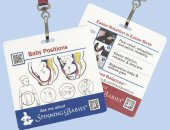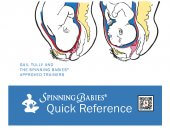If you have questions about a recommendation for a cesarean
- Do you understand and accept why? If so, then move to the next question.
- If you don’t understand why, ask. You may design your questions around asking for the following five areas of decision making:
-
- Benefits
- Risks
- Alternatives
- Intuition
- Nothing
If medical action is warranted, then instead of doing “nothing” ask about “Next Steps.” If you have time to try something from Spinning Babies® website, this would be discovered in the Alternatives and the Nothing portions of the informed consent conversation.
3. What if, after the discussion of Benefits, Risks, and Alternatives, you don’t feel that the recommendation of surgery is right for you?
You may either find another care provider, or ou may give yourself compassion for accepting a surgery that you aren’t entirely in agreement for. You are giving birth with a birth team that may have differing opinions. It’s a natural feeling to agree with the person you chose to guide you through birth safely. There may be some grieving even as you see the practicality of going with a surgical birth.
- In rare cases, parents may look for another provider or even another hospital or provider.
- It’s not uncommon to have mixed feelings while accepting the cesarean.
- Check in with yourself. Acknowledge your feelings, whether or not you seek other opinions.
Whatever you decide, I hope you look back a year from now and feel listened to, empowered, and satisfied with your choices. You get to choose.
Planning for a cesarean
There are ways to make your cesarean more family-focused.
Talk to the anesthesia department at your hospital to discuss personal adaptations to your needs. For instance, do you want your doula to be present with your mate/partner/husband during the surgery?
Do you want to give your baby the benefits of skin-to-skin contact?
Ask ahead of time for as many physiological accommodations as possible or achievable, such as delayed cord clamping, skin-to-skin contact on the operating room, breastfeeding in the Recovery Room, doula presences in the Operating Room and/or in the Recovery Room.
After the cesarean, you can create an intimate skin-to-skin welcome of your new baby or babies. Holding the baby is a wonderful way to reestablish a calm welcome and go for an extra hormonal “bonding” surge after a busy beginning in the Operating Room. Ask your doula, partner, family member or nurse to help you!






